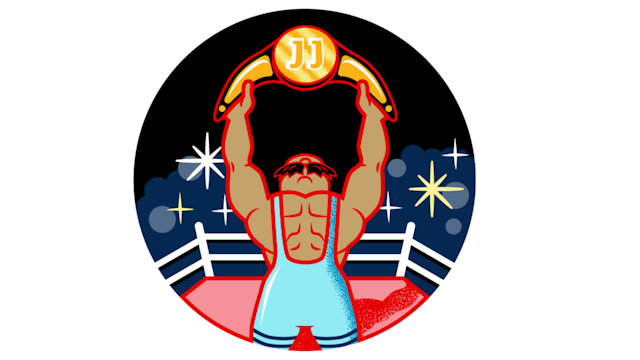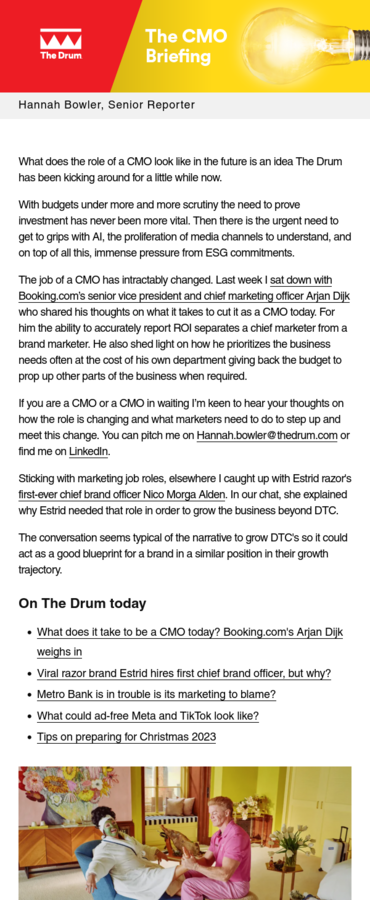Doritos, Jimmy John’s & others are capturing first- & zero-party data with clever tactics
In this segment of The Drum’s latest Deep Dive, The New Data & Privacy Playbook, we examine the novel ways that brands are enticing consumers into volunteering their personal information.

Halo Top’s ‘No work workout’ activation collected first-party data (with consumers’ consent) / Credit: Halo Top
Consumer privacy changes in the digital marketing ecosystem are prompting brands to completely reimagine their data-driven marketing strategies.
Consumers are becoming more aware of the value their personal information holds. At the same time, tech titans and regulators around the globe are cracking down on the collection, storage and sale of consumer data. In addition to Apple’s well-publicized, privacy-focused software changes, Google plans to phase out third-party cookies next year on both Chrome and Android in an attempt to prevent consumer tracking.
Advertisement
As a result, advertisers – who have long relied on user-level tracking methods – are losing access to swaths of third-party data, complicating everything from ad targeting to attribution.
In response, a growing contingent of brands is coming up with new ways to incentivize consumers to volunteer their personal information. This can be in the form of first-party data – information a company collects directly from its customers – or even zero-party data, defined as information a customer proactively gives to a brand. In exchange for their valuable data, brands are rewarding consumers in clever new ways.
And however challenging this period of transition may be for brands, a shift to primarily first- and zero-party data strategies is sure to benefit them in the long run. “Collecting first-party data can be a valuable way for brands to maintain a direct relationship with their customers, rather than relying only on third-party data that may be less accurate or trustworthy,” explains Tate Olinghouse, chief client officer at consumer database marketing company Acxiom.
Below, we uncover some novel first- and zero-party data collection strategies from leading consumer packaged goods (CPG) and restaurant brands – and how these tactics might equip them to thrive in the post-cookie era.
Advertisement
Gamified rewards programs for the win
In order to get their hands on first- and zero-party data, brands are finding ways to entice consumers. This can take a variety of forms – from discounts to sweepstakes – in exchange for a membership sign-up, email address or phone number.
However, some brands are looking beyond the obvious and inventing new tactics – tactics that involve exclusive product offers, loyalty rewards, personalization and even gamification.
For example, in January, sandwich chain Jimmy John’s began rolling out its first ‘Achievement badges‘ for its ‘Freaky Fast Rewards Members.’ Although the brand has had a rewards program since 2019, the addition of badges gamifies the experience on the Jimmy John’s app, prompting repeat visits from members.
One badge launched earlier this year called ‘The Gauntlet’ rewarded the first 100 members who ordered every sandwich on the menu with an exclusive, limited-edition chip bag-inspired beanbag chair.

Low-cal workouts drive conversions
Another gamified tactic comes from Wells-owned low-calorie ice cream brand Halo Top.
And obtaining first- and zero-party data is especially valuable for CPG brands like Halo Top, which often market and sell primarily via retail channels rather than direct-to-consumer. Adam Fish, director of omnichannel strategy at Wells, says, “Gaining first-party data scale for CPG brands is challenging because we don’t own the transaction; however, first-party data helps brands best understand their consumer and build long-term data durability.”
Last month, Halo Top started rolling out ‘No Work Workouts’ in select gyms across the country. Led by Observatory, the initiative encouraged consumers to take breaks from their regular workout routines to engage in fun, low-effort calorie-burning activities, from watching scary movies to playing air guitar.
“For those consumers who give consent, we can ingest first-party data into our audience segments,” explains Fish. He adds that the brand has seen a meaningful boost in conversions since it began moving from third-party data collecting to leveraging a mix of data sources a few years ago.

Suggested newsletters for you
Virtual experiences attract audiences and their info
Finally, last June saw an activation from Doritos and Netflix to promote Stranger Things Season 4.
The campaign, developed in partnership with creative agency Observatory (which last month was folded into Crispin Porter + Bogusky), turned Doritos bags into tickets for a fake music festival taking place in the show’s 1980s universe, called ‘Live From the Upside Down.’ Contemporary artists like Charli XCX as well as ‘80s greats such as Soft Cell and the Go-Gos made up the lineup.
“We marketed this event like any other concert, from the mythology of the Doritos Music Fest ‘86 to artist promos, press interviews, line-up posters, exclusive merch, and digital integrations,” says Brendan Shields-Shimizu, chief executive officer at Observatory. “This was a unique way of getting eyes on the concert and traffic to Doritos, Netflix and snacks.com, generating consumer sign-ups.”
Shields-Shimizu adds that the collaboration enabled “massive first-party data acquisition,” driving 800,000 visitors and enlisting 50% of program participants to sign up for the site’s distribution list, becoming the largest scale program on snacks.com to date.
The ethics of privacy at play
Experts generally agree that consumer consent in data collection is far more ethical than the cross-device tracking methods that marketers have long relied on. And while the majority of consumers see these initiatives as fair value exchanges, even zero- and first-party exchanges carry some risks.
Matt Voda, a consumer privacy advocate and chief executive of marketing software company OptiMine, notes that “consumers’ data [could be] sold to third parties and then the consumer gets spammed.”
However, the majority of reputable brands don’t do this, because they seek to build trust with consumers in order to facilitate future purchases. Plus, new privacy regulations, like those rolling out across US states this year, generally have limitations on data sales without consumer consent.
And of course, at the end of the day, “most successful brands want to retain the consumer relationship because new customers are expensive to acquire, so they will avoid actions that threaten to lose hard-earned customers,” says Voda.
A core principle driving many brands‘ schemes to incentivize consumers to share their details is that data collection itself should be a fair value exchange, creating tailored experiences as a reward for valuable information.
As Daniel Barber, chief executive at privacy software firm DataGrail says: “Personalization doesn’t mean you can’t respect privacy – you just have to do it in a respectful, trustworthy way, and you have to secure it,“ he says. “And, you should only be collecting the data you need to provide great customer experiences.”
Can these ploys prove sustainable alternatives to tracking?
By and large, US consumers are becoming more aware of how their data is used, and more open to sharing it with brands in exchange for a reward of equal value to them. “Consumers don't see [these tactics] as a ‘bribe’ per se, because they get value in exchange for this information,” says Voda.
More importantly, these initiatives often end up being cost-effective for brands as well, suggesting that they can be sustainable solutions in the wake of lost third-party data relationships. As Voda puts it: “Brands see extremely compelling economics of marketing via a direct relationship through email and SMS. These methods are the least expensive ways to reach a consumer and rank among the most cost-effective ways to generate sales.”
Acxiom’s Olinghouse adds: ‘Brands who use these tools to help acquire new customers can be successful with these approaches over the long term, as long as they provide value and don’t violate basic tenets of trust... The winners have an information and intelligence advantage over brands that haven’t solved the privacy-drive measurement challenge.”
Of course, marketers in some categories will benefit more than others. “Take sporting events, for example; there are emerging technologies that allow people in the stands to create and share their own experiences by simply scanning a QR code on the jumbotron,” says Olinghouse. “Experiences like those are being well-received by consumers. In other verticals – in automotive, for example – the verdict is still out. Automakers have invested billions in connected-vehicle and in-vehicle experiential technologies but the horizon on returns on those investments is still uncertain.“
To read more from The Drum’s latest Deep Dive, where we’ll be demystifying data & privacy for marketers in 2023, head over to our special hub.


